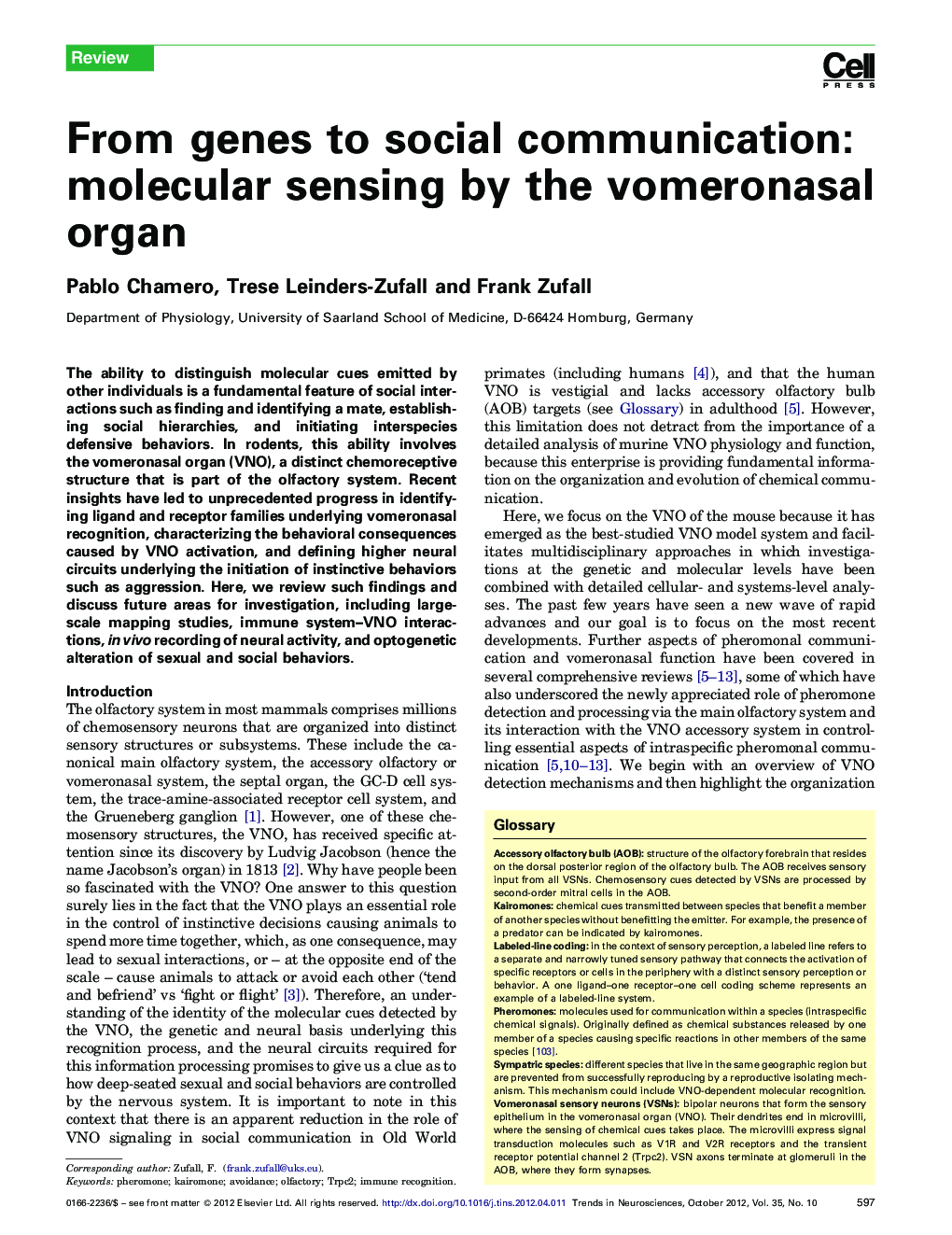| Article ID | Journal | Published Year | Pages | File Type |
|---|---|---|---|---|
| 4354466 | Trends in Neurosciences | 2012 | 10 Pages |
The ability to distinguish molecular cues emitted by other individuals is a fundamental feature of social interactions such as finding and identifying a mate, establishing social hierarchies, and initiating interspecies defensive behaviors. In rodents, this ability involves the vomeronasal organ (VNO), a distinct chemoreceptive structure that is part of the olfactory system. Recent insights have led to unprecedented progress in identifying ligand and receptor families underlying vomeronasal recognition, characterizing the behavioral consequences caused by VNO activation, and defining higher neural circuits underlying the initiation of instinctive behaviors such as aggression. Here, we review such findings and discuss future areas for investigation, including large-scale mapping studies, immune system–VNO interactions, in vivo recording of neural activity, and optogenetic alteration of sexual and social behaviors.
